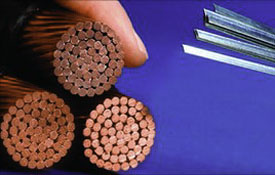Essentially, it's the property exhibited by certain materials, often at low temperatures, to channel electrical current with zero resistance and little power loss.
Imagine hitting a cue ball with a snooker cue and it never slowing down, carrying on forever.
Basically, that was the promise of superconductivity when the phenomenon was first discovered by Dutch Physicist Kamerlingh Onnes.
The charge-carrying electrons traveling through the wires of your computer right now are bounced and slowed down by the vibrations of the atoms in the wires, and by impurities in the metal that makes them up, which is why computers get hot and why long-distance power lines are inefficient; but with superconductivity, those tortuous movements are removed—electrons careen through a material unimpeded.
Though, for decades after its discovery, the effect was seen only at temperatures within 23˚ of absolute zero—that were available only in the most advanced labs.
Then, 25 years ago, IBM researchers in Zurich announced they discovered a material that started to become superconducting at 35˚ above absolute zero.
There aren't many occasions in history that a physics discovery makes such a splash.

The year following the discovery, thousands of academic papers were written on the topic of superconducting copper oxides, and the discovery garnered the pair the next year's Nobel Prize in physics—making it the shortest-ever time between a discovery and a Nobel Prize.
Like optical fibers, the technology was quietly refined over the years and, in some senses, is ready to be deployed.
What would almost certainly push things along would be a material that becomes superconducting at much higher temperatures—radically simplifying the cooling of wires.



























































